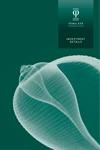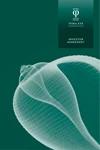
Puma EIS
Closed for investment
Product Overview
Puma EIS employed a proven investment strategy to offer exposure to asset-focused businesses across a range of sectors.
Key objectives of the Fund were to:
- Support the growth of UK SMEs
- Provide exposure to asset-focused businesses
- Provide EIS tax reliefs on 100% of funds invested (after deduction of Financial Adviser charges)
Learn more about EIS
The Enterprise Investment Scheme was launched in 1994 by the Government to encourage individuals who are UK taxpayers to invest in unquoted UK companies.
The popularity of the Enterprise Investment Scheme has increased significantly in recent years. Data from the 2021/22 tax year confirms that a record total of slightly over £2,305m was invested under the Scheme. EIS Income Tax relief was originally 20%, but since being increased to 30% in April 2011, alongside the many other tax reliefs available, EIS has been adopted by a greater number of advisers as an additional retirement planning tool.

Risk Factors
You can only invest in Puma EIS through a Financial Adviser who has assessed that an investment is suitable for you. An investment in Puma EIS carries risk, and you should read in full the Puma EIS Investment Details. Below are the key risks:
General: Past performance is no indication of future results, and share prices and their values can go down as well as up. The forecasts in this document are not a reliable guide to future performance.
Liquidity: It is unlikely there will be a liquid market in the shares of the EIS-qualifying companies, and it may prove difficult for investors to realise their investment immediately or in full.
Capital at risk: An investment in Puma Alpha EIS can be viewed as high risk. Investors' capital may be at risk, and investors may get back less than their original investment.
Tax reliefs: Tax reliefs depend on individuals' personal circumstances, minimum holding period and may be subject to change.
Figures on this page are taken from Puma Investments and are correct as of 1 August 2022 unless stated otherwise.









